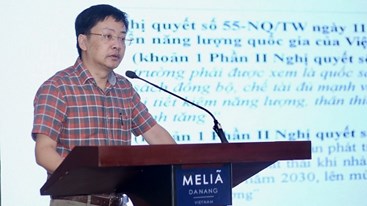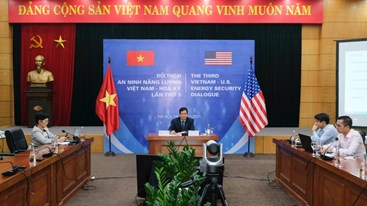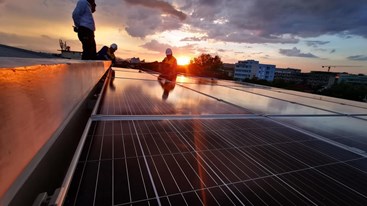Popeye gets his strength from downing a can of spinach and what works for him also works for solar panels. Researchers at Vanderbilt University led by David Cliffel and Kane Jennings have come up with a way to dope silicon with a protein found in spinach to create a more efficient "biohybrid" solar cell that produces substantially more electrical current than previous efforts and may one day lead to cheaper, more efficient solar panels.
Adding plant proteins greatly enhances silicon solar cells
Millions of years of evolution has made photosynthesis an extremely efficient process for generating energy, but developing artificial photosynthesis systems for electricity generation anywhere near as efficient has proven difficult.
It has been known for over 40 years that a complex photoelectric protein called Photosystem 1 (PS1) could still work outside of a living plant cell and it was later discovered that the protein could convert sunlight into electrical energy with an efficiency of nearly 100 percent, far surpassing the efficiencies of current most man-made solar cells. Add to that the fact that an organic solar cell is made of cheap and readily available materials rather than exotic elements and PS1 looked like a winner.
While scientists have found ways to efficiently extract PS1 from leaves and have successfully used it to make biohybrid cells that produce electrical current when exposed to sunlight, the amount of power these cells can produce per square inch is far below that of commercial photovoltaic cells. Additionally, the performance of the solar cells deteriorated rapidly.
The Vanderbilt team’s breakthrough is that where earlier attempts added PS1 to metal, they used it to dope silicon to create a more efficient biohybrid solar cell. Producing the cells was relatively simple. The surface of a silicon wafer is treated with an aqueous solution of PS1 then placed in a vacuum chamber to evaporate the water. This leaves a layer of PS1 only 100 molecules thick.
This combination of silicon and PS1 removes the problem with metal cells, which is that metal allows electricity from the PS1 to flow in both directions, lowering output. With silicon, the electricity only flows in one direction. The result is dramatic. A silicon/PS1 cell generated 850 microamps of electricity per square centimeter at 0.3 volts – two and a half times more current than earlier biohybrid cells. The team estimates that a two-foot (0.6 m) panel would yield 100 milliamps at one volt, which is enough to power small electrical devices.
Panel of biohybrid solar cells
“This combination produces current levels almost 1,000 times higher than we were able to achieve by depositing the protein on various types of metals. It also produces a modest increase in voltage,” said David Cliffel, associate professor of chemistry.
The cells also showed much greater longevity. Where older biohybrid cells deteriorated in a matter of weeks, the Vanderbilt biohybrid operated for nine months without losing performance.
The researchers have applied for a patent for the process and hope to convert the technology into a functioning solar cell. Their work appears in the journal Advanced Materials




.png?w=367&h=206&mode=crop)
.jpg?w=367&h=206&mode=crop)



